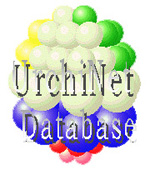

mRNA level
| Stage | |||||||||||
| SU-G3 level | |||||||||||
| SU-G9 level | |||||||||||
| SU-G8 level |
mRNA coding for kinase-dead GSK3B were injected into unfertilized eggs
at dozes varying from about 0.4 pg to 4 pg per egg (4* 105 to 4* 105).
Doses below 0.4 pg had no visible effect on embryo morphology.
Around the threshold value of 0.4 pg, most embryos (>95%) were unaffected,
but a few had an abnormal pluteus-like shape.
At about 0.8 pg injected embryos displayed a range of phenotypes.
The digestive tract was greatly enlarged and was formed by exogastrulation,
reflecting overdevelopment of the endoderm at the expense of the ectoderm.
Spicules had abnormal shapes and were strongly reduced in most cases.
There are classic features of the vegetalized morphology obtained by treatment
with vegetalizing agents such as lithium.
At 2 pg up to 4 pg, nearly all embryos ( >95%) consisted of a hollow sphere
of thick epithelium, with a small invagination, one or two clusters
of pigmented cells and a few other cells within the central cavity.
Spicules were totally absent.
Such extreme phenotypes have never been observed following lithium
treatment, probably because high concentrations of lithium are toxic.
Except for this extreme form, the series of increasingly abnormal phenotypes
closely resembled that obtained with increasing concentrations of lithium.
These results suggest that GSK3B is the target for lithium
in the sea urchin embryo, with the kinase-dead GSK3B having a dominant-
negative effect that mimics lithium inhibition.
Injection of kd-GSK3B also reduce the HE
expression domain. The results resemble those observed while treatment with
lithium (Ghihlione et al., 1993) but the effect is stronger since HE can be repressed to an undetectable level (Emily-Fenouil et al., 1998).
| Dose | ||||
| Effect (48 hour embryos) | No visible effect | Most embryos (>95%) were unaffected, but a few had an abnormal pluteus-like shape | Embryos displayed a range of phenotypes. The digestive tract was greatly enlarged and was formed by exogastrulation. Spicules had abnormal shapes and were strongly reduced in most cases | Nearly all embryos ( >95%) consisted of a hollow sphere of thick epithelium, with a small invagination, one or two clusters of pigmented cells and a few other cells within the central cavity. Spicules were totally absent |
Microinjection of about 1 pg per egg of either sea urchin or Xenopus
GSK3B produced embryos with a narrow range of altered phenotypes.
Embryos overexpressing GSK3B did not gastrulate. In a very few
cases ( <1%), embryos had the overall shape of a gastrula with apparently
normal spicules but no archenteron. In most cases the morphology was simpler:
embryos were spherical, sometimes slightly flattened, and frequently
had very long cilia. The epithelium was thickened on one side, indicating
morphological polarity. One single, small abnormal spicules or no spicules
were seen. Very few or no cells were present inside the blastocoel.
These features characterize the animalized phenotype, which can be
obtained by treatment with a variety of chemical agent, including zinc.
Misexpression of the wild-type GSK enlarges the HE spatial
domain. The enlargement in the HE expression territory
parallels the change in morphology provoked by overexpression of wt-GSK3B,
and suggests that wt-GSK3B produce a true animalization, resulting from an
extension of the presumptive ectoderm territory (Emily-Fenouil et al., 1998).
| Dose | |
| Effect (48 hour embryos) | <1% of embryos had overall shape of gastrula with apparently
normal spicules but no archenteron.
In most cases embryos were spherical, sometimes slightly flattened, and frequently had very long cilia. The epithelium was thickened on one side, one single, small abnormal spicules or no spicules were seen. Very few or no cells were present inside the blastocoel |
Upstream Genes | |||||||||||||||
GSK3B/shaggy | |||||||||||||||
Downstream Genes |